Cell Structure and Organization
Solutions
1. Choose correct option
A. Growth of cell wall during cell elongation take place by ………….
a. Apposition b. Intussusception
c. Both a & b d. Super position
Answer: c. Both a & b
- Explanation: The document mentions that the cell wall in plants grows by apposition (adding new layers) and intussusception (incorporation of new material within the existing wall).
B. Cell Membrane is composed of
a. Proteins and cellulose
b. Proteins and Phospholipid
c. Proteins and carbohydrates
d. Proteins, Phospholipid and some carbohydrates
Answer: d. Proteins, Phospholipid and some carbohydrates
- Explanation: The document describes the cell membrane as consisting of a phospholipid bilayer, proteins (intrinsic and extrinsic), and carbohydrates (e.g., glycoproteins and glycolipids).
C. Plasma membrane is fluid structure due to presence of –
a. Carbohydrates b. Lipid
c. Glycoprotein d. Polysaccharide
Answer: b. Lipid
- Explanation: The fluid mosaic model explains that the quasifluid nature of the plasma membrane is due to the lateral movement of lipids (phospholipids), which allows fluidity.
D. Cell Wall is present in –
a. Plant cell b. Prokaryotic cell
c. Algal cell d. All of the above
Answer: d. All of the above
- Explanation: The document states that the cell wall is present in plant cells, prokaryotic cells (e.g., bacteria), and algal cells.
E. Plasma membrane is –
a. Selectively permeable
b. Permeable
c. Impermeable
d. Semipermeable
Answer: a. Selectively permeable
- Explanation: The document specifies that the plasma membrane is selectively permeable, allowing specific molecules to pass through via passive or active transport.
F. Mitochondrial DNA is –
a. Naked b. Circular
c. Double stranded d. each one of the above
Answer: d. each one of the above
- Explanation: The document mentions that mitochondrial DNA is naked (not associated with histones), circular, and double-stranded.
G. Which of the following set of organelles contain DNA?
a. Mitochondria, Peroxisome
b. Plasma membrane, Ribosome
c. Mitochondria, Chloroplast
d. Chloroplast, Golgi body
Answer: Mitochondria, Chloroplast
- Explanation: The document confirms that both mitochondria and chloroplasts contain their own DNA, unlike peroxisomes, plasma membranes, ribosomes, or Golgi bodies.
2. Answer the following questions
A. Plants have no circulatory system? Then how cells manage intercellular transport?
Answer: Plants lack a circulatory system, but intercellular transport is facilitated by plasmodesmata, which are cytoplasmic bridges between neighboring cells. These structures, described in the document, allow the exchange of materials like nutrients, water, and signaling molecules through pores in the primary cell wall and middle lamella.
B. Is nucleolus covered by membrane?
Answer: No, the nucleolus is not covered by a membrane. The document states that the nucleolus is a dense spherical body within the nucleoplasm, composed of rRNA and ribosomal proteins, and is not bound by a membrane.
C. Fluid mosaic model proposed by Singer and Nicolson replaced Sandwich model proposed by Danielli and Davson? Why?
Answer: The Fluid Mosaic Model (Singer and Nicolson, 1972) replaced the Sandwich Model (Danielli and Davson) because it better explains the dynamic and fluid nature of the plasma membrane. The Sandwich Model proposed a static lipid bilayer with protein layers on both sides, but it couldn’t account for the lateral movement of proteins and lipids. The Fluid Mosaic Model describes the membrane as a phospholipid bilayer with proteins embedded like “icebergs” that can move laterally, supported by evidence of membrane fluidity and protein mobility.
D. The RBC surface normally shows glycoprotein molecules. While determining blood group do they play any role?
Answer: Yes, glycoprotein molecules on the RBC surface play a critical role in determining blood groups. These glycoproteins act as antigens (e.g., A, B, or Rh antigens), which are recognized during blood group typing. The document mentions glycoproteins as part of the plasma membrane, and their specific types determine blood group compatibility.
E. How cytoplasm differs from nucleoplasm in chemical composition?
Answer: Cytoplasm (or cytosolic matrix) is a colloidal, jelly-like material containing water, organic molecules (sugars, amino acids, enzymes), inorganic molecules (minerals), and organelles like mitochondria and ER. It supports metabolic activities and cyclosis. Nucleoplasm (or karyolymph), found within the nucleus, contains nucleic acids (DNA, RNA), histone and non-histone proteins, minerals, salts, and the nucleolus. The document highlights that nucleoplasm is specialized for genetic activities (e.g., DNA replication, ribosome synthesis), while cytoplasm is a broader metabolic hub.
3. Answer the following questions
A. Distinguish between smooth and rough endoplasmic reticulum.
Answer:
Smooth Endoplasmic Reticulum (SER):
- Lacks ribosomes on its surface.
- Functions: Lipid synthesis (e.g., steroids in adrenal glands), detoxification of drugs (in liver cells), and calcium ion storage (in muscle cells).
Rough Endoplasmic Reticulum (RER):
- Studded with ribosomes on its outer surface.
- Functions: Protein synthesis (e.g., secretory proteins like insulin in pancreatic cells) and membrane formation by adding proteins and phospholipids.
Reference: The document explains the structural and functional differences, noting that RER is involved in protein secretion, while SER handles lipid-related tasks.
B. Mitochondria are power house of cell. Give reason.
Answer: Mitochondria are called the powerhouse of the cell because they are the primary site of aerobic respiration, producing ATP (adenosine triphosphate), the cell’s energy currency. The document describes mitochondria as double-membraned organelles with cristae (inner membrane folds) and oxysomes (ATP synthase particles) that facilitate the Krebs cycle and electron transport chain. These processes generate ATP through oxidative phosphorylation, powering cellular activities.
C. What are the types of plastids?
Answer: The document classifies plastids based on their pigments and functions:
- Leucoplasts: Colorless, store nutrients (e.g., amyloplasts for starch, elaioplasts for oils, aleuroplasts for proteins).
- Chromoplasts: Contain pigments like carotene and xanthophyll, imparting red, yellow, or orange colors to flowers and fruits.
- Chloroplasts: Contain chlorophyll, responsible for photosynthesis, found in green plant cells (e.g., mesophyll cells).
4. Label the diagrams and write down the details of concept in your word
5. Complete the flow chart
Answer:
6. Label the A, B, C, and D in above diagram and write the functions of organells A and B.
Answer:
A: Mitochondria
B: Endoplasmic Reticulum
C: Golgi complex
D: Amyloplast
Functions of Mitochondria:
- Shape of the mitochondria may be oval or spherical or like a spiral strip.
- It is a double membrane-bound organelle.
- Outer membrane is permeable to various metabolites due to the presence of a protein-Porin or Parson’s particles.
- The inner membrane is selectively permeable to a few substances only.
- Both membranes are separated by intermembrane space.
- The inner membrane shows several finger-like or plate-like folds called as cristae which bears numerous particle oxysomes and cytochromes/electron carriers.
- Inner membrane encloses a cavity called the inner chamber, containing a fluid-matrix.
- Matrix contains few coils of circular DNA, RNA, 70S types of ribosomes, lipids, and various enzymes of Krebs’ cycle and other pathways.
Functions of Endoplasmic Reticulum:
- The endoplasmic reticulum (ER) is in charge of transport.
- Carbohydrates and proteins are transported to other organelles.
- It is essential for lipid, glycogen, and protein production. Like other steroids, it offers a large space for biological responses.
- It serves as an intracellular supporting structure while also maintaining the cell’s shape.
It promotes the production of plasmodesmata. - Endoplasmic Reticulum (ER) is the tubular membrane inside the cytoplasm of the cell. Its structure and function are found in both animal and plant cells.
- It is of two types: Smooth Endoplasmic Reticulum and Rough Endoplasmic Reticulum.
- The RER and SER ensure smooth intracellular processes necessary for cell survival and function.
7. Identify each cell structure or organelle from its description below.
i. Manufactures/generates ribosomes
Answer: Nucleolus
- Explanation: The document states that the nucleolus, located within the nucleus, is composed of rRNA and ribosomal proteins and is the site of ribosome biogenesis, where ribosomes are synthesized.
ii. Carry out photosynthesis
Answer: Chloroplast
- Explanation: The document describes chloroplasts as double-membraned organelles containing chlorophyll, found in plant cells (e.g., mesophyll cells), algae, and some protists. They are responsible for photosynthesis, producing sugar using light energy.
iii. Manufactures ATP in animal and plant cells
Answer: Mitochondrion
- Explanation: The document explains that mitochondria are double-membraned organelles involved in aerobic respiration, producing ATP through processes like the Krebs cycle and electron transport chain. They are present in both animal and plant cells (except RBCs and prokaryotes).
iv. Selectively permeable
Answer: Plasma membrane
- Explanation: The document specifies that the plasma membrane is selectively permeable, allowing specific molecules to pass through via passive transport (e.g., diffusion, osmosis) or active transport (e.g., Na+/K+ pump), regulating the movement of substances into and out of the cell.
8. Onion cells have no chloroplast. How can we tell they are plants?
Answer: Onion cells lack chloroplasts because they are part of the bulb, an underground storage organ that does not perform photosynthesis. However, we can identify them as plant cells based on the following characteristics from the document:
- Presence of a cell wall: Onion cells have a rigid cell wall made of cellulose, hemicelluloses, pectin, and other materials, a feature unique to plant cells, algae, and some protists, as described in the document.
- Large central vacuole: The document notes that plant cells often have a large central vacuole occupying up to 90% of the cell volume, bound by a tonoplast membrane, which maintains turgidity and stores ions or pigments. Onion cells exhibit this feature.
- Plasmodesmata: The document mentions plasmodesmata, cytoplasmic bridges between neighboring plant cells, which facilitate intercellular communication. These are present in onion cells.
- Absence of centrioles: The document indicates that centrioles are typically found in animal cells, not plant cells. Onion cells lack centrioles, aligning with plant cell characteristics.


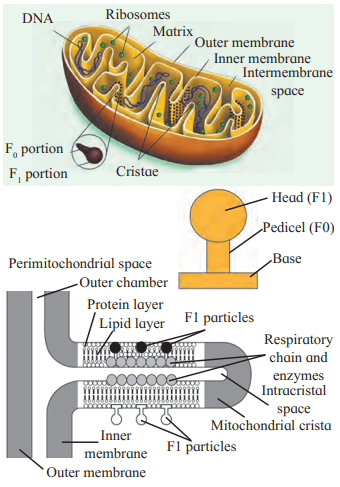

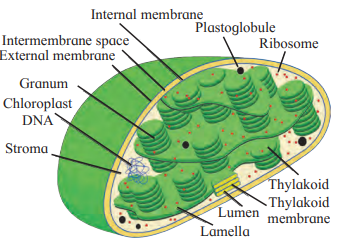

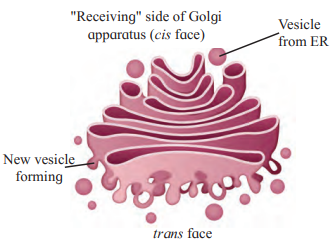
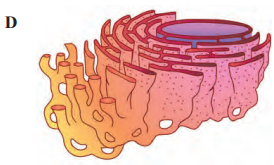
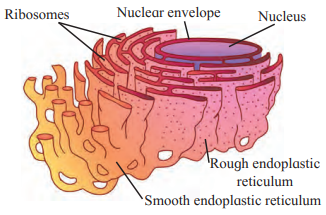
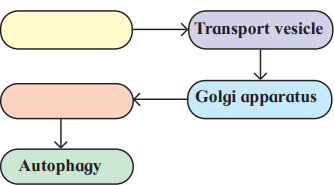
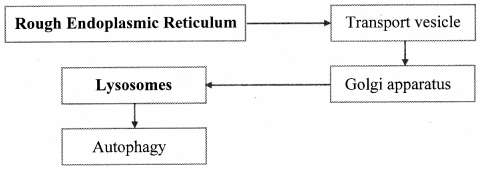

Leave a Reply